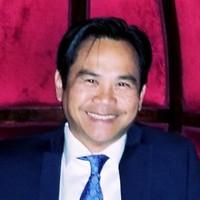How to address the looming healthcare employment crisis


Bruce Bolger
Hieu Bui, MD, MBA, FACHE
Healthcare organizations can best prepare for an anticipated labor shortage and other workforce challenges by adopting a holistic approach to human capital management as a discipline, with the goal of promoting greater employee engagement and satisfaction. Without a highly engaged and committed workforce, organizations will be compromised in their ability to deliver high-quality, cost-effective care.
Consider the workforce challenges facing healthcare today.
The baby boomers are retiring, and the millennials are poised to play a major role in the supply side of healthcare staffing as they become the next dominant workforce group. With this group, healthcare employers can expect a greater demand for transparency, flexibility, leadership training, career advancement and work-life balance compared with previous generations.
The industry also is struggling with the problem of burnout among healthcare practitioners, which has been exacerbated by COVID-19 and is causing many to exit the practice. If this issue is not addressed, the industry may experience a further loss of available workers.
When one also considers that it takes years to train physicians, nurses and technicians, there is every reason to expect the supply of workers will not meet the demand for many years.
In the face of a looming labor shortage crisis, hospitals and health systems that take proactive steps to effectively address the needs of the changing workforce demographics will enjoy a strategic advantage.
The solution: a holistic, proactive approach
To meet these challenges, healthcare organizations should adopt a holistic approach to human capital management that demonstrates empathy to employees and a commitment to their well-being. As a key defining feature, the approach should be designed to be proactive rather than reactive.
For example, it should eschew the purely reactive approach that all too many organizations use to address turnover and recruitment challenges, which tends to involve actions such as simply adjusting pay and offering incentives or recognition. Such an approach does not effectively account for all the reasons people stay or leave. Those reasons are not limited to compensation and benefits. In fact, organizations often do not have to pay top dollar if they proactively address other issues, including a sense of purpose, work-hour flexibility, career advancement and job design. Particularly in healthcare, retention is more related to culture and the quality of the work environment than it is to pay or benefits.
Organizations also should seek to identify and address the root causes of disengagement, which can include feeling a lack of purpose, a bad relationship with a manager, poor work-life balance or other experiential factors as part of a proactive approach to human capital management.
Engagement surveys can better function as tools to identify such issues, for example, if they are designed to reflect the organization’s core values in a way that is mindful of these concerns. But an important prerequisite to developing effective surveys is to have HR leaders who are well versed in the principles of proactive human capital management and to tap into these leaders’ expertise to educate the organization’s operational managers in human capital management metrics, reporting and enterprise engagement practices.
Moreover, a proven track record and a demonstrated ROI are hallmarks of such an approach based on its widespread implementation in other industries as well as healthcare (see the sidebar below for a case example).
In a 30-year analysis of the correlation between stock prices and Fortune’s 100 Best Companies to Work for in America, In two separate studies, Alex Edmans, professor of finance at London Business School, found that companies ranked as Best Companies outperformed the stock market by nearly 3 percentage points per year. Edmans’ findings were also confirmed by a recent study using the same methodology. A seminal study first published in the August 2005 Harvard Business Review found a direct correlation between employee and customer engagement and financial success.
The good news is that for most hospitals it also requires little investment in money or time, except perhaps for implementing employee-engagement technology if desired.a
As with quality management in manufacturing, human capital management also generally does not require new tactics: It’s a matter of doing what organizations ordinarily do to engage people, but with greater efficiency and better alignment, and of ensuring management receives the training they need to drive these improvement efforts.
Strategic human capital management plan components
Based on an effective road map for strategic people management developed by the International Organization for Standardization (ISO), a well-designed strategic plan should describe a continuous improvement process that involves monitoring key metrics and tactical results to identify problems, opportunities for improvement or innovations. Such a plan should incorporate the following features:
- A CEO-led commitment to the plan and its execution
- Clearly defined purpose and goals for the human capital plan tailored to the organization’s purpose and goals
- Specific metrics related to financial goals that encompass all stakeholders, including:
- Productivity
- Range of employee skills and capabilities
- Employee recruitment and retention
- Workforce availability
- Customer and community engagement
- Leadership effectiveness (as defined by factors such as productivity and retention)
- Costs associated with staffing
- Human capital ROI as calculated using the following formula
- total revenue – all non-people costs ÷ by people costs
- Willingness of customers and supply chain partners to recommend the organization
- Effectiveness of diversity, equity, inclusion (DEI) training and policies as reflected in employee satisfaction and the organization’s culture
- A management operating system to help track metrics and build the human capital plan into daily operations, with clear accountability from front-line managers up to the CEO
- A well-defined holistic approach to tactical recruiting, coaching, training, communications and job design tied to individual and organizational financial and other goals (for example, if a hospital is dedicated to exceptional patient experiences, that focus should be reflected in each individual’s performance goals as well as those of each team and of hospital as a whole)
- Employee-engagement strategies, metrics and incentives directly aligned with patient- engagement strategies and metrics to promote desired behaviors (for example, tracking the patient satisfaction scores of teams and rewarding the teams both for the behaviors that lead to patient satisfaction and for the level of satisfaction itself)
- A total rewards strategy that seeks to align all the organization’s professional development, benefits, mentoring and other processes to ensure meaningful engagement with each employee as a whole person
Note, however, that these features describe only the framework for such a plan. The specific details of the plan will need to be tailored to each organization’s specific circumstances.
Implementation steps
As noted above, optimizing performance through people starts with having a CEO committed to transforming people from the status of a “sunk cost” into a profit center. Because all stakeholders are involved with the most effective practices, responsibility for implementing the plan is shared among three system leaders:
- The COO or equivalent who is responsible for day-to-day operations.
- The chief human resource officer who is responsible of employee engagement.
- The chief medical officer (CMO) or equivalent responsible for ensuring patients are treated as customers.
The effort begins with a formal gap analysis to identify the degree to which the organization has defined all of the previously described structural elements, including its purpose, vision and values and clear stakeholder management metrics.
The bottom-line benefit of a human capital management plan? By increasing employee satisfaction, retention and engagement, a hospital can attract new talent — often at the recommendation of an employee — while reducing its HR costs. Meanwhile, patients will benefit from greater employee commitment and engagement and be more willing to recommend the facility or return for elective procedures. As a result, these hospitals enjoy increased goodwill from the community, which makes it easier to attract support for local engagement activities.
The key to mastery
To truly master the discipline of human capital management, organizations must understand the employee life cycle from recruitment to departure, and they must have a strategic human resources management process in place that invests in training and other resources. The foundational goal should be to not only attract but also retain talent by creating better experiences and outcomes for both employees and patients. Internal and external customers all tie together; you can’t focus on one without focusing on the other and still expect to achieve your financial and operational goals.
Why healthcare organizations should focus on employee engagement
According to Gallup, employee disengagement takes a terrible toll on economies and people worldwide, with only about 20% of employees fully engaged at an estimated cost of over $8 trillion in lost productivity, turnover, quality, service, absenteeism, accidents, etc. Although there are no statistics on the rate of employee disengagement in healthcare specifically versus other industries, a Gallup study of 200 hospitals found that nurse disengagement was the No. 1 cause of accidental deaths.
Hospital administrators should be receptive to the lessons that can be gleaned from other economic sectors about the new focus on human capital and environmental, social, governance (ESG) management, otherwise known as stakeholder capitalism, which is the process of creating returns for shareholders by creating value for customers, employees, supply chain partners, communities and the environment.a
As other stakeholders become more invested in the public disclosures of human capital metrics, and organizations such as the Leapfrog Group continue to publish hospital service quality ratings, these activities exert increasing pressure of healthcare organizations to address the issue of human capital management and reporting.
Footnote
a. See, for example, Bremen, J.M., Ganu, S., Sung, A., and Wurtzel, M., “Human capital is the key to a successful ESG strategy,” World Economic Forum, Sept. 2, 2021.
Case Study
Employee recognition/retention program helps one hospital achieve a significant one-year cost reduction
Even a simple recognition program can make a difference in improving employee engagement. A hospital in the Midwest with 200 nurses implemented a retention program using an employee engagement application known as Täk to address a turnover rate of 21% costing over $1 million a year. The Täk program included a manager-to-employee and peer-to-peer recognition platform that:
- Provided a budget for rewarding points to nurses for positive behaviors
- Provided regular news and community information to all employees
- Assessed employee moods through pulse surveys that were shared with managers
Points could be accumulated and redeemed for brand name merchandise or special offers from local retailers and restaurants.
Over the course of the first year, the hospital experienced a:
- 10% increase in employee engagement scores
- 5% reduction in nurse turnover
- 4 Star CMS Rating up from 3 stars previously
- Increased grade to “A” on Leapfrog Group surveys, from a “C” in the previous year
- A one-year cost reduction of $665,000
- A 1,100% ROI





